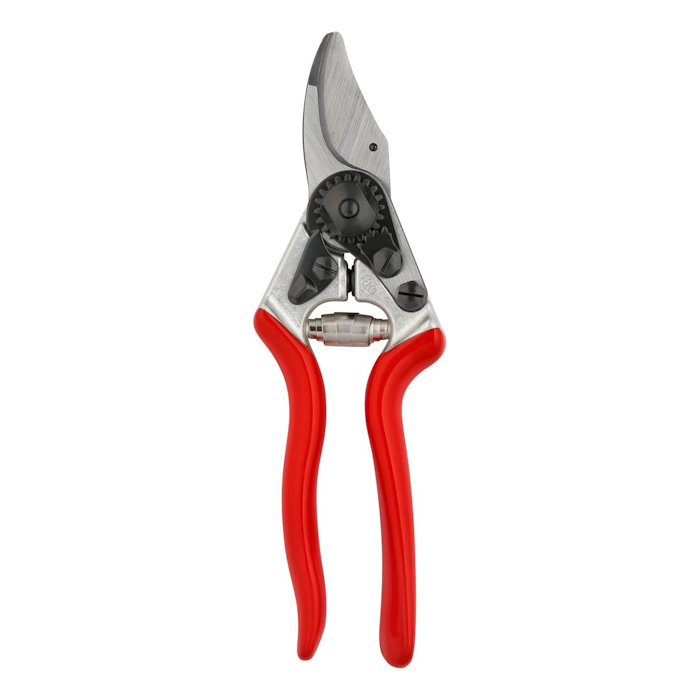When is the best time to prune roses? Follow these simple timing rules for the best blooms from your garden stalwarts
Timing is crucial when pruning roses; leaving it too late can result in a rose garden mishap rather than a rose garden masterpiece

Sophia Pouget de St Victor

Roses are redolent of summer, but for them to perform their best at this time, knowing when to prune your roses is essential. But pruning is not without its perils, and the biggest mishap that will wreak havoc on your roses is to prune them at the wrong time.
Knowing how to prune roses is one thing, but trying to decipher precisely when to prune different varieties of roses to maximise their flowering potential can leave even the most confident gardener nonplussed. Before approaching your rose garden, secateurs in hand, you will need to be equipped with rose care and growing knowledge so you can avoid some common rose pruning mistakes, since getting it wrong can result in a rose garden mishap rather than a rose garden masterpiece.
Here, we decode the labyrinth of rose pruning rules, and if you’re wondering if it is too late to prune your roses, simply follow this guide for pointers.
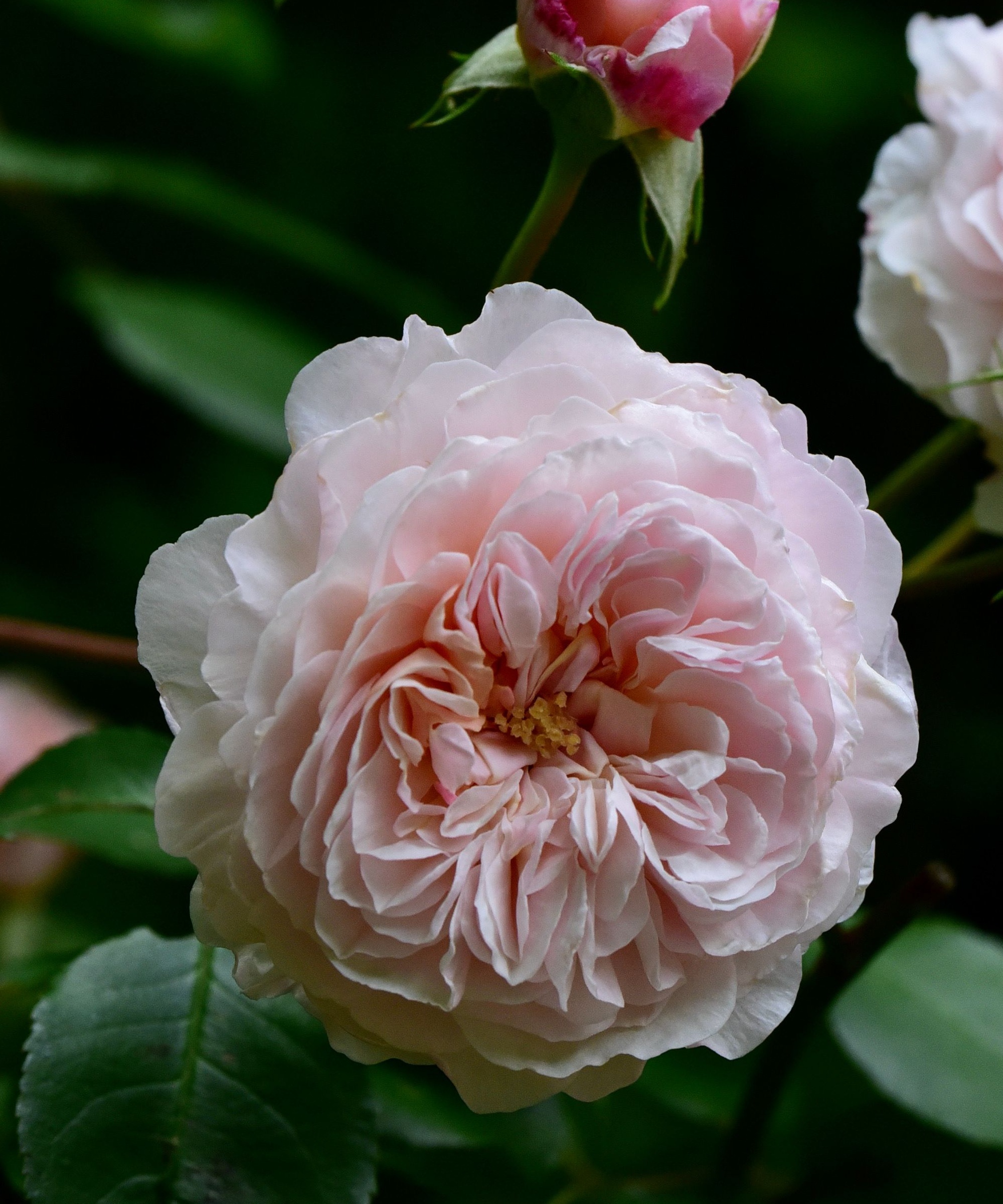
When is the best time to prune roses?
The vast majority of roses can be pruned when they are dormant in late winter, ideally after the last frost. Here is a simple guide to get you started:
If your rose is a shrub rose, then it will most likely want to be pruned during late winter. The ideal time is just as the new rose buds are beginning to swell. This can be anytime from February to early April. For reference, I tend to have mine cut back by the beginning of February, since the risk of frost has passed by then in my locality.
If your rose is a climbing rose, the ideal time to prune it is from late fall. November would be an ideal month.
If your rose is a rambling rose, it needs to be pruned in late summer.
Design expertise in your inbox – from inspiring decorating ideas and beautiful celebrity homes to practical gardening advice and shopping round-ups.
If you have a rose that produces rosehips, you do not need to prune them (rosehips are beautiful, a boon to the local wildlife, and make a delicious jam). So, do check if your rose produces hips before cutting them back.
Pruning is, of course, distinctly different from deadheading. Many of us grow repeat-blooming shrub roses, and these can be deadheaded (note: not hard pruned) throughout the summer, so you have a proliferation of new blooms all summer long.
There are many rose varieties, so I recommend doing your research to identify the right timing for the specific rose that is growing in your yard.
When is the ideal time to prune shrub roses?
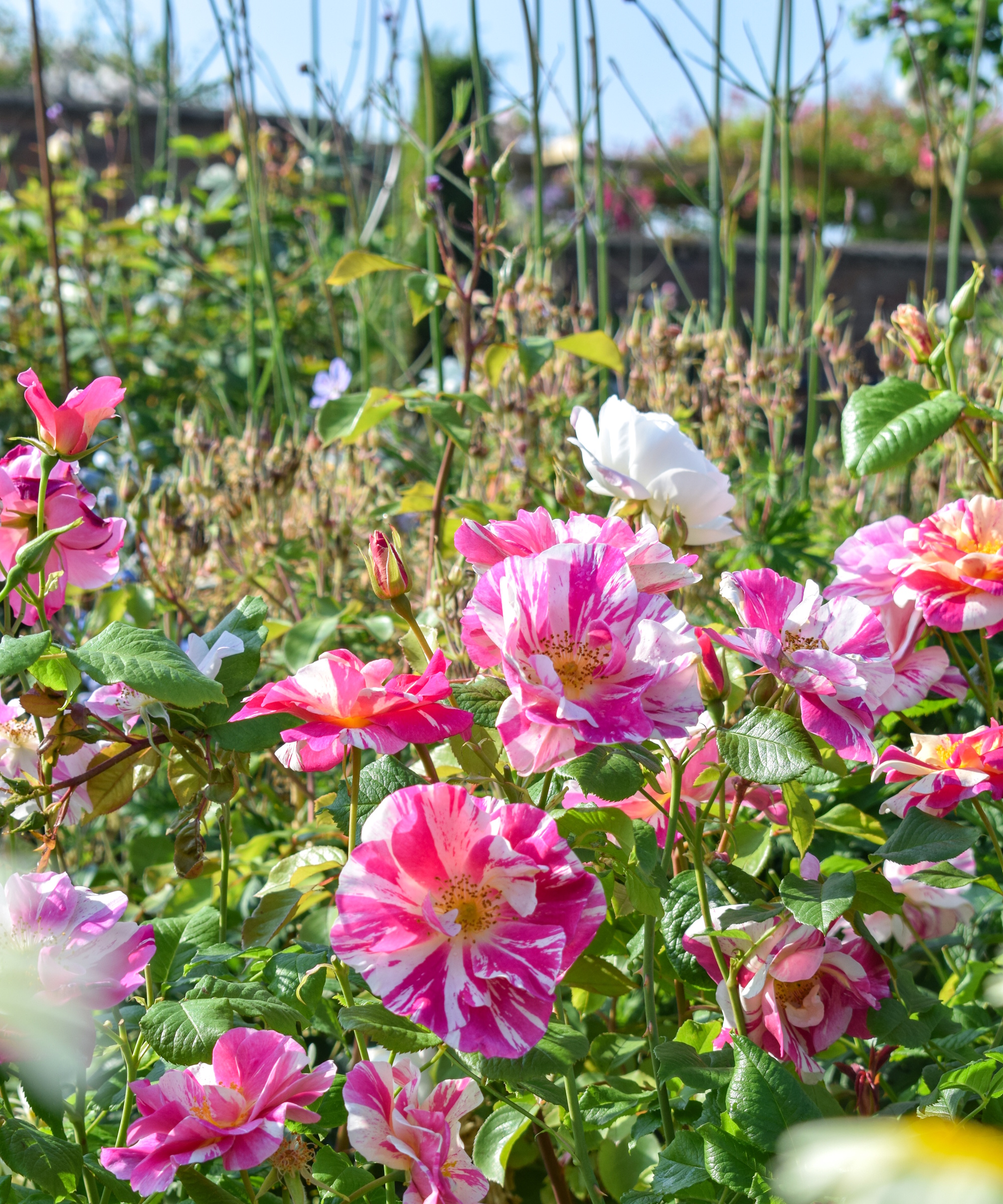
The ideal time to prune shrub roses is during late winter or very early spring, preferably after the last frost, but just as the new rose buds are beginning to swell. While it is hard to predict the weather, a quick inspection of rose stems will help to guide you.
'Pruning shrub roses can be done in late December, January, or February in regions where the winters are mild. In regions with cold winters, pruning should be delayed until early spring growth is just starting,' advises esteemed rose grower David Austin, of David Austin Roses
While pruning your shrub rose too late can impact negatively on growth, it is also problematic to prune too early. Remember that pruning stimulates new growth, which is good news so long as all risk of frost has passed.
If you prune too early, the new growth that is produced will be particularly vulnerable to snow and frost, and if damaged, it will need to be cut out. I always prune by shrub roses near Valentines Day, and now the association is strong, I'm sure to never be late.
When is the ideal time to prune climbing roses?
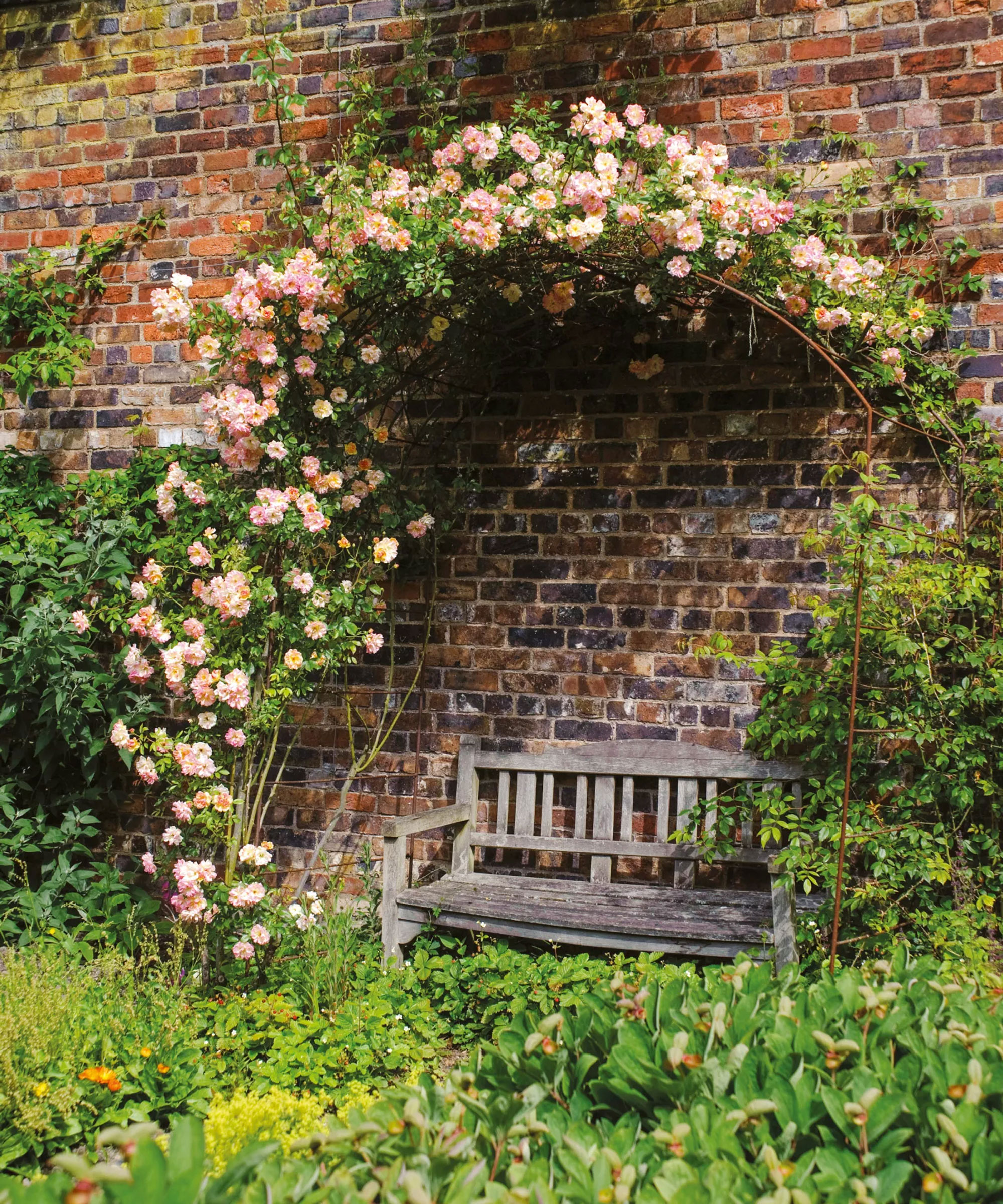
Despite their delicate appearance, climbing roses are hardy plants, so don't be afraid to prune them hard.
The ideal time to prune climbing roses is from late fall to winter, so slightly earlier than when you typically prune shrub roses. November would be a perfectly suitable time. So, when Thanksgiving appears on your calendar, time to prune those climbing roses!
Leaving it too late to prune your roses means you’ll sacrifice a lot of fresh growth time. ‘However, if you still haven’t pruned your climbing rose by March, it is still better to do so than leave it completely,’ says Austin.
Climbing roses typically respond better to pruning during this fall, and by pruning at this time, you will be able to identify which stems are performing well and which should be trimmed back or removed. Don't forget, after pruning your climbing rose, feed it with a specialist rose product, like this rose food available at Amazon.
When is the ideal time to prune rambling roses?
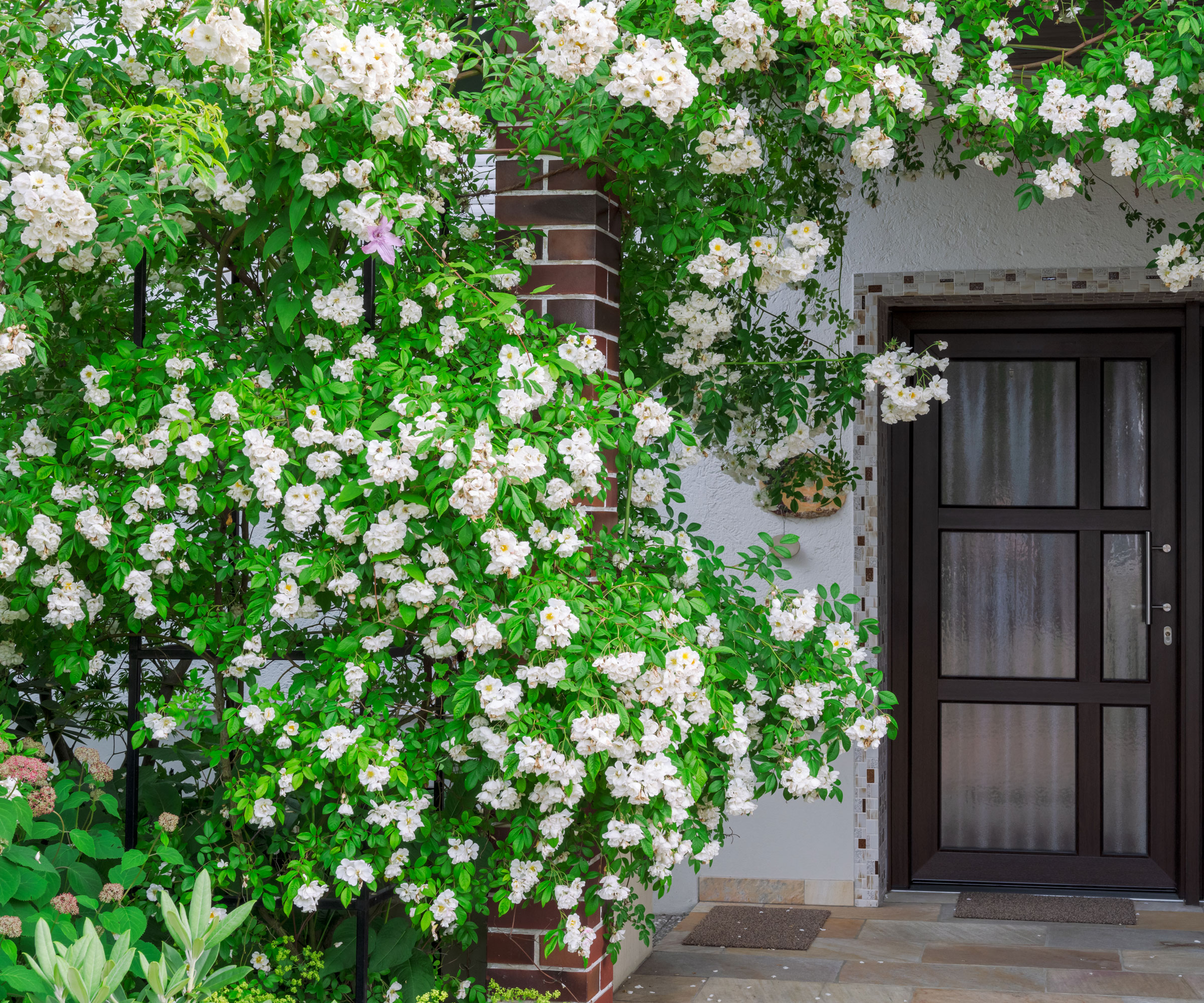
Rambling rose varieties that produce long and whippy stems during the growing season are best pruned in summer.
Why summer? Unlike other roses, Rambling roses will not flower on the current year’s growth, so they need to be pruned just after flowering, as they will then produce new wood (this summer) for next year’s blooms.
Most rambling roses only flower once, so once it's finished flowering in the summer, it's time to prune it back. The rose should be fed in spring before growth restarts.
Shop for pruning tools
FAQs
What to do if you forget to prune your rose?
If you forget to prune your shrub rose and it is too late in spring, the best thing you can do is to delay your pruning until early summer.
You can tidy up your shrub rose, by cutting any thin stems or weak growth and removing any dead or damaged stems that appear brown or black. It is best to leave any healthy green growth, tying in these new stems if they need support.
Following this approach, you can enjoy the spring flowering of your shrub rose, and prune after blooming has finished, usually around the start of summer. If pruning is completed early enough in summer, around June, your rose will have plenty of time to produce lots of new growth that can harden off before winter.
Climbing roses are not pruned in the summer months, although if necessary, you can do some light trimming after flowering. For any significant pruning, it is best to hold off and wait until the fall.
When is the right time to deadhead a rose?
For those wondering when to deadhead roses, the answer is a simple one. You should deadhead roses at all times through the growing season to encourage repeat blooming.
In doing so, you are preventing the rose from expending energy on producing fruits and seeds, thereby encouraging the rose to produce more flowers.
Stop deadheading from September, from which time you want to allow the spent flowers to develop into rose hips.
So, if you follow this simple guide, you can be sure you won't leave it too late, or jump in too early, to prune your roses.
If you are designing a rose garden, don't be put off by the seemingly strict pruning schedule; once you know how and when, it will become an easy and natural rhythm of your regular winter gardening checklist or summer gardening checklist.

Thomas is a Content Editor within the Gardens Team at Homes and Gardens. He has worked as a professional gardener for both public spaces and private estates, specializing in productive gardening, growing food and flowers. Trained in Horticulture at the Garden Museum, he has written on gardening and garden history for various publications, including The English Garden, Gardens Illustrated, Hortus, The London Gardener and Bloom. He has co-authored a Lonely Planet travel book, The Tree Atlas, due out in 2024.
- Sophia Pouget de St VictorUK Content Editor
